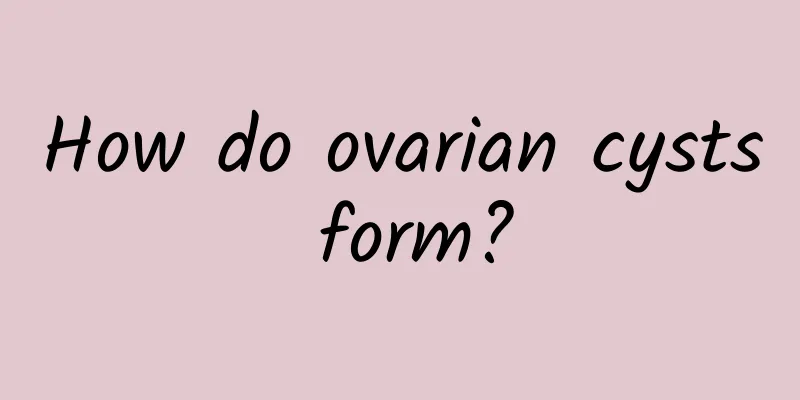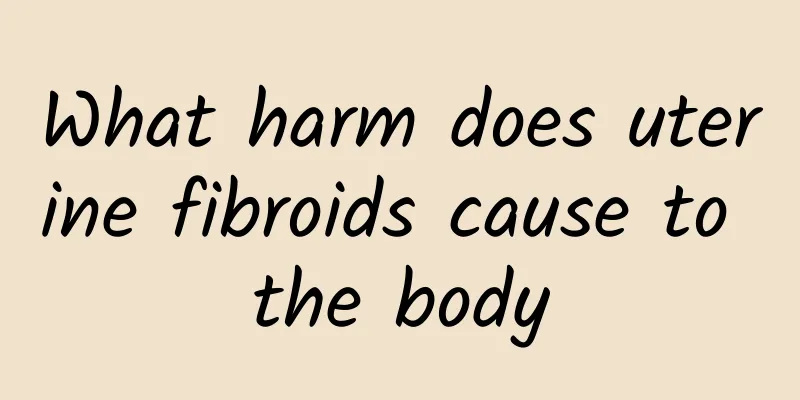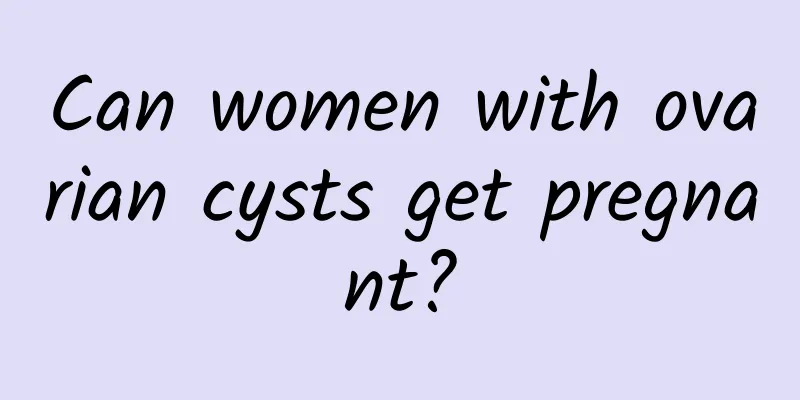How do ovarian cysts form?

|
How are ovarian cysts formed? Ovarian cysts are the first of the three major gynecological diseases. If it is a malignant ovarian cyst, it is actually very dangerous. Not only is it difficult to cure, but it can also lead to infertility in severe cases. Therefore, it is best for everyone to understand the causes of ovarian cysts. Understanding these factors can enable women to consciously carry out preventive health care. Today, I will introduce to you the causes of ovarian cysts. 1. Individual factors 1. Psychological factors: Although mental trauma and psychological imbalance cannot cause cancer, that is, they cannot initiate cancer, they can reduce the body's immunity, reduce the function of the thymus, spleen, and lymph nodes, and cause the suppressed cancer cells to proliferate actively. 2. The main carcinogenic effect of menstruation and endogenous sex hormone estrogen is estrone. Estrogen also promotes the carcinogenicity of methylcholanthrene (MCA). 3. Pregnancy and breastfeeding: Pregnancy can reduce the incidence of ovarian cancer, but for some women, the effect is only significant after four or more births. 4. Other diseases: The incidence of ovarian cancer accompanied by thyroid disease is three times higher than that of normal people. Low iodine can enhance the function of the pituitary gland and promote the development of ovarian cancer. 2. Infection Factors 1. Viruses HIV, HCMV, and rubella virus can all cause cancer, while mumps virus and influenza virus can reduce the occurrence of ovarian cancer. 2. Other aflatoxin derivatives can cause ovarian cancer. 3. Lifestyle Factors 1. Diet and nutrients: Excessive fat intake increases the risk of ovarian cancer by 50%, and drinking coffee for more than 40 years can increase the risk of ovarian cancer by 3.4 times. 2. Tobacco and alcohol: Smoking ≥ 20 cigarettes a day is slightly more likely to cause ovarian cancer. 3. Birth control measures: Oral contraceptives can protect the ovaries and significantly reduce the incidence of ovarian cancer. Fallopian tube sterilization can also greatly reduce the incidence of ovarian cancer. 4. Hygiene and Medical Factors Screening can detect ovarian tumors early. During diagnosis and treatment, benign ovarian tumors require intraoperative dissection of the healthy ovary. Removal of the uterus can reduce the risk of cancer in the retained ovary. 5. Human and Social Factors Over the past 40 years, the incidence of ovarian cancer has increased threefold. The incidence of ovarian cancer in large cities is higher than that in medium-sized cities and remote areas. 6. Environmental factors 80% are chemical, nitrosamines, coal tar, alkylating agents, chromium, etc. are carcinogenic. Low zinc and low iodine are also known to be prone to ovarian cancer. |
<<: What are the consequences of recurrence of dysmenorrhea in women?
>>: What are the symptoms of multiple ovarian cysts?
Recommend
Green apples, red apples, and yellow apples: which one is the most nutritious?
The slogan "An apple a day keeps the doctor ...
Too lazy to date because it’s cold? Yoga for couples helps you lose weight and increase your interest
It’s so cold in winter, so cold that I don’t want...
The difference between menstrual bleeding and ectopic pregnancy bleeding
What is the difference between menstrual bleeding...
Why does bacterial vaginosis recur easily?
Nowadays, more and more people may suffer from ba...
Common symptoms of ovarian cysts
Ovarian cysts have no obvious symptoms in the ear...
How to effectively control food calories? 3 ways to teach you how to lose weight healthily without burden
Do you have to learn to starve yourself before yo...
What are the dangers of vaginitis
What are the hazards of vaginitis? The incidence ...
Cost of Care Center for Hyperprolactinemia Patients
How much does it cost to care for patients with h...
Repeated abortions can easily lead to ectopic pregnancy
Repeated abortions can easily lead to ectopic pre...
What are the symptoms of uterine fibroids?
Uterine fibroids cause serious harm to our patien...
What to do if you have irregular menstruation due to anemia?
What to do if you have irregular menstruation due...
How to self-diagnose whether you have uterine fibroids?
Uterine fibroids are the most common benign tumor...
Does endometrial tuberculosis have symptoms of excessive leucorrhea?
Endometrial tuberculosis is a disease with a wide...
What causes uterine fibroids? What is the connection between uterine fibroids and estrogen?
Uterine fibroids are the most common gynecologica...
Introduction to the causes of pelvic inflammatory disease
What are the causes of pelvic inflammatory diseas...









